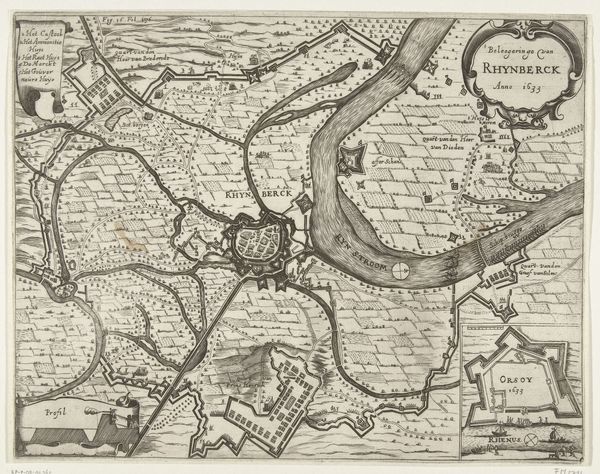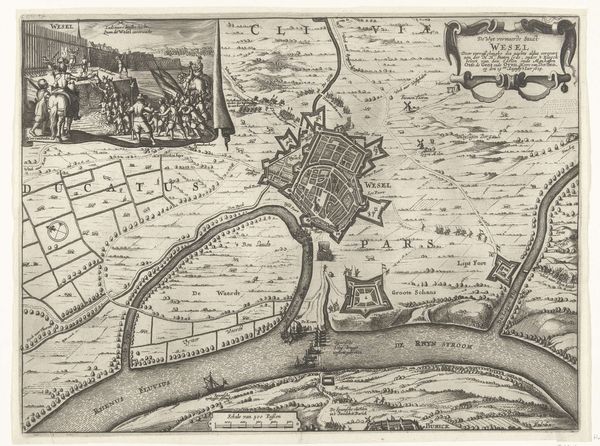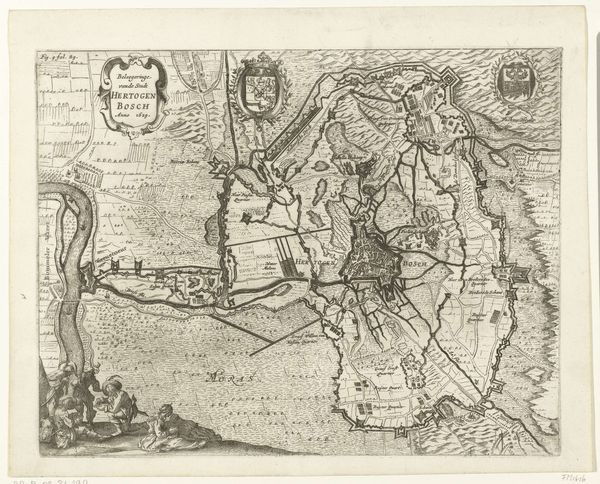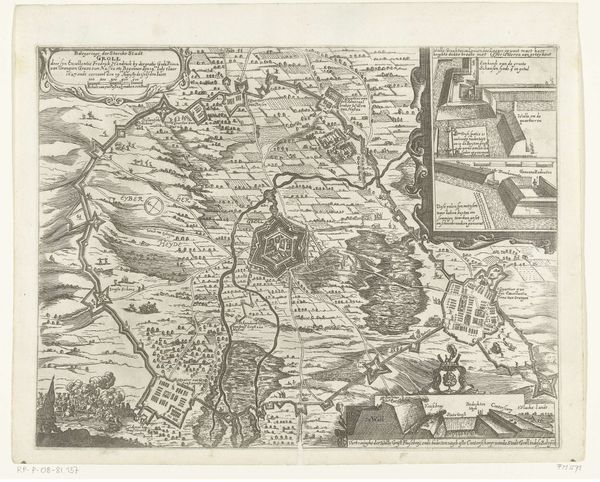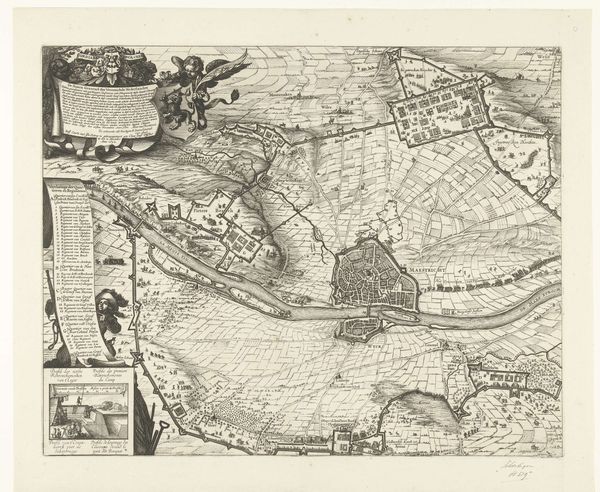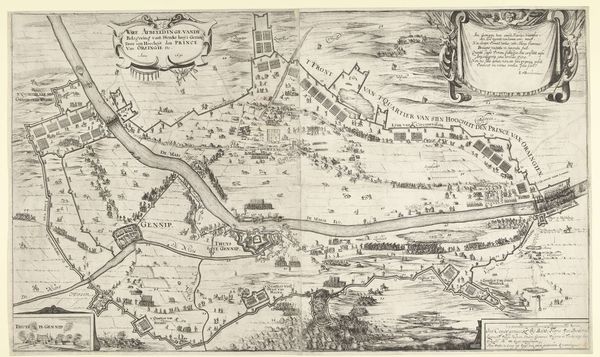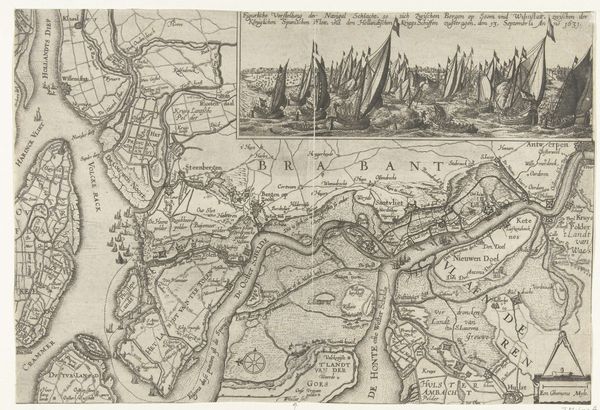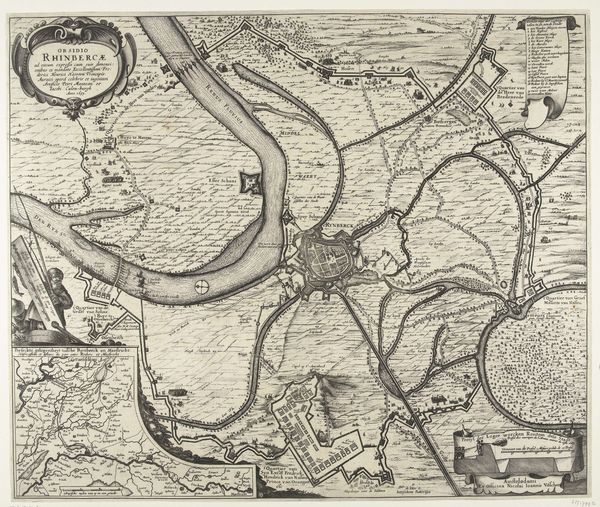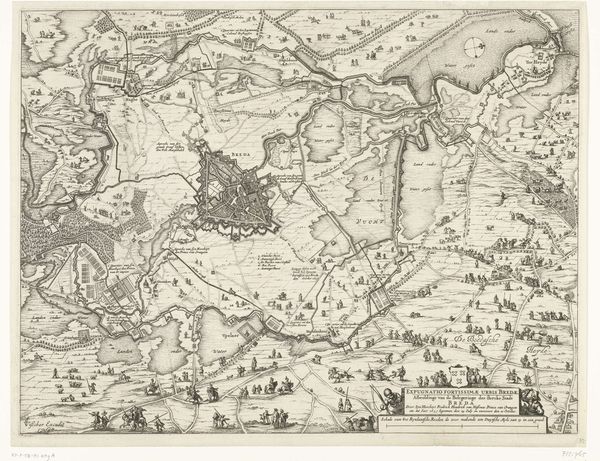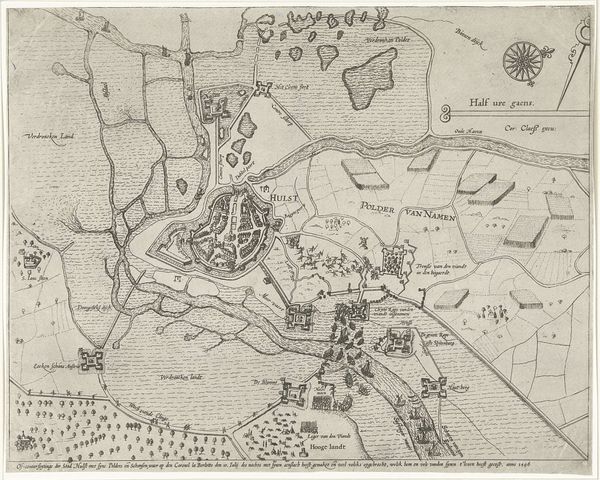
print, engraving
#
dutch-golden-age
# print
#
landscape
#
cityscape
#
history-painting
#
engraving
Dimensions: height 276 mm, width 356 mm
Copyright: Rijks Museum: Open Domain
Editor: Here we have an engraving from 1651-1652, titled *Beleg van Hulst door Frederik Hendrik, 1645,* or *The Siege of Hulst by Frederik Hendrik, 1645*. It's currently housed here at the Rijksmuseum, but the artist remains anonymous. It’s such a detailed and precise depiction of the city, it almost feels like an architectural plan or strategic overview more than a traditional artwork. What jumps out at you when you look at this piece? Curator: It’s a fascinating interplay of lines and textures. The varying densities of the engraved lines create different visual weights, guiding the eye. Notice how the engraver uses finer lines for the water, creating a sense of vastness, and denser, more chaotic lines to depict the fortifications and the surrounding landscape. This textural contrast creates a visual hierarchy. Do you perceive how the geometry creates balance and structure, while the subject depicts dynamic action? Editor: Absolutely, I see that. The city itself is very clearly defined, almost like a central anchor amidst all the besieging forces and the landscape. The neatness of Hulst really stands out against the busyness all around it. Curator: Indeed. Observe how the engraver uses line to differentiate space. The lines create form and also describe distance. What might this emphasis on geometry and structure suggest about the artist’s intention, or perhaps the period’s values? Editor: Perhaps a focus on order and control in the face of conflict? The clear, almost clinical depiction mutes any real sense of chaos or suffering, keeping it at a remove. It feels designed to celebrate strategic prowess rather than convey the realities of war. Curator: Precisely. Consider then, the interplay of line, form, and space within the historical context. The artwork exists as a testament to this complex interplay of aesthetic form and cultural meaning. Editor: I hadn't considered it in that way. Looking at the print now, the detail does make me think about perspective. I understand now how the choices contribute to the piece’s message and meaning. Curator: Understanding the construction allows for a new, richer interpretation. We can more deeply appreciate the power of formal devices in this work.
Comments
No comments
Be the first to comment and join the conversation on the ultimate creative platform.
